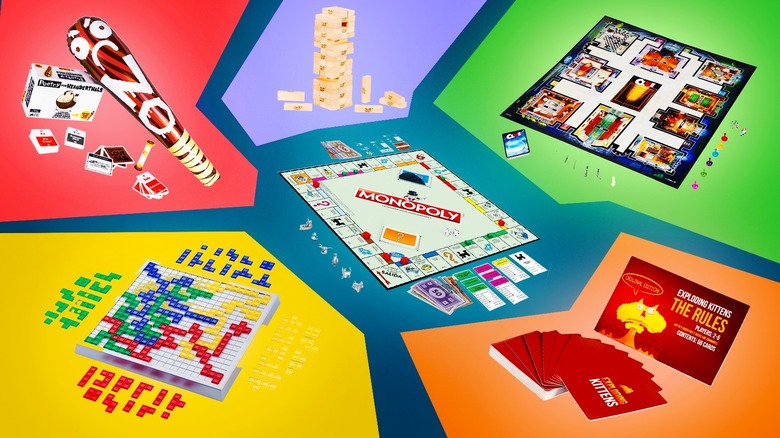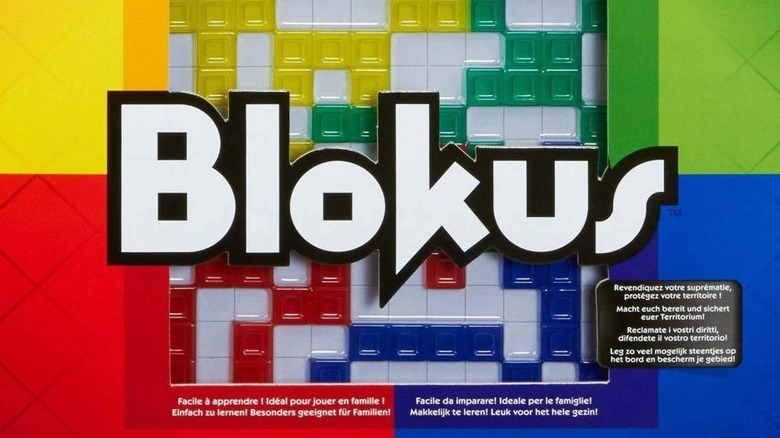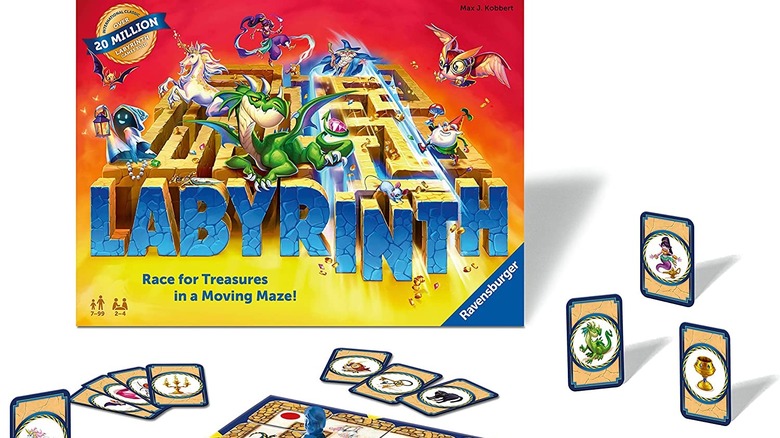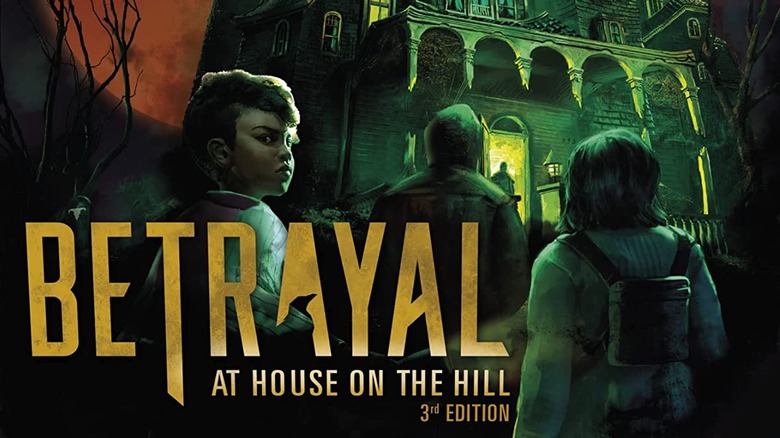
Nearly infinite amounts of fun can be had playing video games or games on our smartphones. Thanks to technological advances, many of us can conjure up almost any type of game in a matter of seconds, with little more than the push of a button and the swipe of an icon. While most of these games are played in a solitary fashion, there's still a social element to be found in the digital realm as the internet makes it incredibly straightforward to compete with (or against) people from all corners of the globe.
However, nothing beats the thrill of playing a good old-fashioned board game with the family – in person. The casual disregard for the rules, the joking around, and even the fights that erupt over whose turn it is can lead to a more enjoyable and memorable experience than playing a game that involves staring at a screen. And so, if you aspire to strengthen the bonds between you and your loved ones of all ages, then check out 20 of the best family board games.
Just One

Designed for three to seven players, this cooperative game is played across 13 rounds. Gameplay consists of one player being given a secret word and then writing down a clue for the guesser of that round. The clue must be in the form of a single word, with identical clues being eliminated to discourage players from giving clues that are too on the nose. Right answers lead to a point while wrong answers result in the loss of a point.
While the average time to play a full game is about 20 minutes, Just One is such a kick that you and your family will likely find yourselves playing multiple games over the course of hours. This game is especially fun for the less competitive types as it encourages teamwork more than opposition. The one-word clue aspect of Just One may seem restrictive at first, but it's actually a great way to exercise your imagination in new ways, and it won't be long before you start brainstorming clever ways to help your teammates.
Do You Really Know Your Family?

Uh oh. Will this game bring out everyone's dirty laundry? Of course not. Still, you might discover some pretty surprising things about the people you thought you truly knew. The youngest player starts it off, moving on to the other players in order of increasing age. Each player picks a card and follows the rules written on it, with two possible types of cards to draw: Trivia Cards and Challenge Cards. Players compete to win the card based on the game it offers, with the goal of collecting 15 cards.
While technically the mission is to win the most cards, it's really to test how well your family members know you -- and how well you know them. Trivia Cards require players to guess such personal details as your least favorite vegetable and your height, which are sure to cause plenty of hilarious arguments. However, the real fun is in the Challenge Cards, as players attempt to make you laugh or guess which family member you're doing an impression of. None of the questions or challenges is too intimate, making this an ideal game for even the most private players.
Star Wars Villainous: Power Of The Dark Side

Sure, playing the hero can be fun, but so can embracing the dark side once in a while. Here, players pick a "Star Wars" villain to portray -- Darth Vader, Asajj Ventress, Kylo Ren, Moff Gideon, and General Grievous -- and are given a villain deck, a fate deck, a player board, and a 3D character. Each villain possesses its own set of abilities, missions, and storylines, providing countless ways for players to fulfill their evil destinies.
This game is spot-on for true "Star Wars" lovers, as it doesn't just pay lip service to the popular series, but incorporates many elements from the entire saga into the gameplay. While there are a good number of rules to absorb, they actually contribute to a more immersive gaming experience as they count on a fair amount of strategy to manipulate events in your favor during your quest to defeat the Rebel Alliance and rule the galaxy.
Blokus

Blokus (pronounced "block us") basically resembles Tetris ... if played in real life. Like the classic video game, Blokus involves arranging a set of colored blocks in a specific fashion. Each player receives 21 pieces that they have to get rid of by placing them on the board. You win by using the most pieces. However, it's not as simple as placing the pieces on the board; the pieces cannot be next to one another and must be positioned corner to corner.
This ranks as one of the more straightforward and easiest games on this list, meaning even the youngest players can pick up the rules very quickly. But Blokus isn't easy to win; it still requires quite a bit of strategy. Blokus moves at a pretty fast pace, around 20 to 30 minutes per game, making it an optimal choice for those seeking some fun without taking up a whole night.
Double Ditto

For this game, a card is drawn and its contents read aloud, with all players writing down two different responses to it that they think other players may write, as well. The goal? Concoct as many similar answers as possible. If one of your answers syncs with another player, that's Ditto. And, as you might guess, if both of your answers overlap with other players, that's called Double Ditto.
The game's comprehensibility partly explains its fun factor, because the real work occurs not in memorizing complex rules, but in concocting the wackiest answers you can. Oh, and did I mention the 15-second time limit for determining your responses? That's fast, and exciting. Double Ditto can be played with as few as two players, but it gets even better and zanier when a crowd participates. Plus, the game includes 400 category cards, so there's endless enjoyment to be had.
Battleship

An oldie but a goodie, Battleship has been entertaining people forever, it seems, and it's no wonder why. Designed for two players, each opponent commands a powerful micro-fleet that consists of a submarine, an aircraft carrier, a battleship, and a patrol boat that they place in positions not seen by the other. Players then guess the coordinates of their opponent's ships; correct guesses are marked with red pegs and white pegs connote incorrect guesses. The one who destroys the other's fleet first wins.
Battleship has been around for decades, making it an excellent choice for parents who want to recreate the joy of their childhood while also hooking their kids on this classic game. The first few guesses are guided by chance, but when players start to determine where their opponent's ships are, things heat up real quick. Even though it's designed for two players, games move pretty quickly, allowing other people to have their turn as well. It's such a good game on its own, it doesn't even need a movie.
Herd Mentality

If you're the kind of person who doesn't like to stand out, then this game's for you. It kicks off with a question card read to the group, and everyone secretly jotting down their response. You want to devise answers that fit in with the majority of everyone else's. Each time a player's answer matches that of the majority, they win a cow. Whoever collects eight cows first wins.
On its surface, Herd Mentality encourages conformity. However, it's really a barometer of how well you think you know the crowd and it asks you to put your social and observational skills to the test. As one might expect, this game gets even more entertaining with a larger group as there are additional opportunities to blend in. There is a downside: with so many questions about pop culture, young children may not be old enough to appreciate the game to its fullest.
Suspend

Suspend consists of an upright metal rod with a hook on the top, along with a bevy of smaller, rubber-tipped metal game rods with notches. The idea is to see how many of the game rods can be attached to one another with nothing but the right amount of gravity and balance. While one player can technically play solo, up to four players can participate in this delightful challenge that necessitates equal parts creativity and physics.
If you like Jenga, then you'll love Suspend. There are so many thrills to be had as each player's turn alters the stability of the miniature metal structure. Will your piece be the one that topples it? Suspend is especially good for children as it fosters hand-eye coordination and other delicate tactile skills, as well as spatial reasoning, thanks to the varied sizes of pieces involved. Adults should expect to develop an addiction too.
Clue

Channel your inner Sherlock Holmes and solve the murder mystery with Clue. You see, someone's killed Boden "Boddy" Black Jr. in his mansion -- with the perpetrator still on the premises -- and it's up to you to eliminate the suspects to find out who did it, how they did it, and where they did it. Did Professor Plum kill Mr. Boddy with the candlestick in the library? Or maybe it was Miss Scarlett, using a knife to slay Mr. Boddy in the study?
This beloved board game has been around for decades (even inspiring a great movie), but the amount of pleasure it provides will never age. A big part of what makes Clue such a delight is its immersive-ness; the backstories of each character and the countless possible solutions to the crime go a long way toward investing players in solving the mystery, functioning more like a role-playing game than one that merely involves moving some pieces around.
Spontuneous - The Song Game

No, you don't need to be a classically trained opera vocalist or possess pop-star singing chops to play Spontuneous. Designed for four to 10 players, this game has participants think up random words and mark them down. When it's a particular player's turn, they read one of the words from their list out loud and set the 15-second timer. Then, the other players must try to sing a song that features the stated word, with the first person singing at least five words from the song before the timer runs out winning the round.
All that's needed to play Spontuneous is knowledge of a few songs, which means shower singers already have an edge. The quality of your singing voice doesn't matter here; in fact, the more terribly everyone croons, the more amusing the experience. Surprise musical challenges scattered throughout the board spice up the experience even further.
Taco Cat Goat Cheese Pizza

This outlandish yet simple card game is designed for two to eight players, who each take an equal portion of a deck of cards. Players put their respective card piles on the table and alternate drawing a card, saying the phrase "Taco Cat Goat Cheese Pizza" as they do so. When a player's card matches the word they speak, all of the other players compete to slap their hands on the card piles first, with the player who ends up last being forced to add the cards to their own batch.
Taco Cat Goat Cheese Pizza's unique marriage of card game, tongue-twisting antics, and pure speed sets it apart from other games. Easily accessible for younger participants, but also fast-paced enough to engage adults, this game is a short play, but is so addictingly competitive that you and your family will undoubtedly play multiple rounds before Game Night ends.
Monopoly

Ladies and gentlemen, the granddaddy of nearly all board games ... Monopoly. Players start with $1,500 each and roll the dice to advance, with each space featuring a chance to lose, make, or invest money. Every time a player passes "Go," they collect $200 from the bank. However, they must pay taxes on their earnings. Players also have the opportunity to develop properties on certain parts of the board, requiring other players to pony up some dough whenever they land on a competitor's houses or hotels.
Is there a more fun way to learn about basic economics than by playing Monopoly? While the ups and downs of the free market may make for an ... odd game premise, Monopoly is actually quite the blast (though it might be a bit boring for especially young players). Things really click, however, further along in the game when everyone owns property and vies to bankrupt each other. By the way, a Monopoly movie is in the works.
Ticket To Ride

Train aficionados will love "Ticket to Ride." The aim of this adventure strategy game: "build" train tracks across the United States, setting up routes from city to city. Gameplay involves collecting and playing train cards in a race to see who can erect the longest railroads. Players can also score points by completing specific tasks laid out in Destination Tickets. If you crave even more railroad fun, available expansions feature numerous other locations around the world.
The average length of a "Ticket to Ride" round spans 30 to 60 minutes, so this one's ideal for abbreviated game nights. The rules are crystal clear, dramatically increasing its replayability. Once everyone has gotten the hang of it, the game quickly turns into a fast-paced and competitive experience, especially with the ability to sabotage other players' train track routes. No teams required for this; it's every train track developer for themselves!
Labyrinth

As if traversing mazes wasn't challenging enough, have you ever tried a maze that keeps changing? It's less difficult than it sounds and far more thrilling. In "Labyrinth," players advance through various mazes that change and contort in order to acquire the seven treasures located on the board. However, it's not as straightforward as just collecting the desired prize; players won't discover what the next treasure on their list is until they've acquired the one before it, keeping everyone on their toes and compelling them to think a few steps ahead.
The dynamic nature of "Labyrinth" ensures that no two games will ever be the same, ranking it high in terms of replayability. This game also provides players with a competitive edge as everyone has the chance to change the maze with every turn to not only benefit their quest to amass the treasures but to complicate their opponents' gameplay.
Sorry!

In this beloved game, players draw cards that instruct them on where to advance their pawns on the board -- with the object being to move all of one's pawns Home first. Sometimes you'll slide Home, other times you'll jump to the destination, or you'll be stuck sending your pawns all the way back to the beginning, or do the same to your opponents. The sole way you'll be spared from the same fate is if you secure your pawns in a Safety zone.
Take out your frustration with your family by trying a few rounds of Sorry! -- as the whole point is to not only advance yourself but to screw over everyone else. The rules are incredibly basic, enabling players of all ages to join in; even young children will have the chance to knock their parents down a peg. Be careful, though, as Sorry! has been known to ruin relationships.
Connect 4 Grab & Go

Think of "Connect 4 Grab & Go" as an extreme version of Tic-Tac-Toe. This pint-sized version of the classic game is made for two players, with each grabbing 21 checkers red or yellow. Players place one of their checkers in the grid, seeking to line up four in a row, horizontally, vertically, or diagonally. Of course, this becomes pretty darn tough when your opponent can use their checkers to cut you off. Some players like to sit and think things through before their next move, while others make quick decisions based on instinct.
The original version of "Connect 4" would be right at home on this list, but the "Grab and Go" version gets the nod thanks to its portability, making it ideal for road trips. Because the rules are almost nonexistent, very young children can pick it up in minutes. Of course, there's still enough strategy involved to keep even experienced adult players grabbing and going and connecting four.
Betrayal At House On The Hill

"Betrayal at House on the Hill" is a narrative-based strategy game wherein three to six "explorers" investigate a haunted old manor to solve the mysteries that lie within. Each room in the ancient house hides a different dark surprise in the form of clues, supernatural entities, and more. The latest edition features an all-new cast of characters to play, different gaming elements, and updated content not seen in previous versions of "Betrayal at House on the Hill."
This game is for those seeking something a little darker and more immersive on Game Night. There are 50 different scenarios to play through, ensuring that each experience provides fresh surprises. One of the highlights of "Betrayal at House on the Hill" is that it starts off as a cooperative game wherein all players work together to achieve a common objective, only for one of the players to, well, betray the others. Warning: While this game isn't too frightening, it may be a bit too intense for players under the age of 12.
Exploding Kittens

Don't worry, no kittens were harmed in the making of this game. Each player selects a card from a deck and adds it to their collection to be used in case they pick an Exploding Kitten, in which case only a certain type of card can "calm" the kitten. Similar to Russian roulette, one unlucky move is all it takes for a player to "explode" and lose this fast-paced game.
"Exploding Kittens" comes with 120 cards, ensuring that the outcome of every game is completely random and full of surprises. This game can allow as many as 10 people to play, making it perfect for parties. Matthew Inman of the Oatmeal is the mastermind behind "Exploding Kittens," and created all-new original art for the card, making this one of the wildest games on this list. And for those who want even more surprises, players can beef up their experience with expansion packs like "Imploding Kittens" and "Zombie Kittens."
Jenga

Just because this popular game has so few rules, don't think it's easy. In "Jenga," small wooden blocks are carefully stacked into a narrow tower, and each player carefully -- VERY carefully -- removes a block and places it on top, hopefully without knocking the whole thing down. The first few turns are fairly safe, but as blocks are removed and put atop the tower, the structural integrity drastically decreases with every move. Whoever causes it to tumble loses the game.
The straightforward rules betray how suspenseful and difficult "Jenga" really is. It's actually a test of multiple skills, including strategy, dexterity, and more. Some participants will play it safe and stick to less dangerous moves, while true daredevils will go for the block with a 99% chance of bringing the tower down if removed. If you truly want to have a good time, grab a feather and tickle the armpit of whoever's removing a block. Architects and demolition experts are not allowed to play (cheaters!) this venerable favorite.
Cards Against Humanity: Family Edition

"Cards Against Humanity on a Family Board Games' list?!" At number one?! Relax, this is the "Family Edition" of the notoriously filthy game. Here, players draw a black card and read the outlandish question it contains. The other players submit what they think is the funniest answer from their collection of white cards. Whoever reads from the black card picks a winning answer; whoever gets rid of their white cards the fastest wins.
Even though this is a cleaned-up version of the more adult-oriented Cards Against Humanity game (for the most part, as even the "Family Edition" has lots of silly toilet humor), there's still plenty of wacky fun to be had for older players. And because the point is to be as surprising and unpredictable as possible, there's no age limit on how much delight can be wrought from this game, even with the profanity and obscenity removed.
Read this next: The 25 Best Kids' Movies Of All Time
The post The 20 Best Family Board Games Ranked appeared first on /Film.
